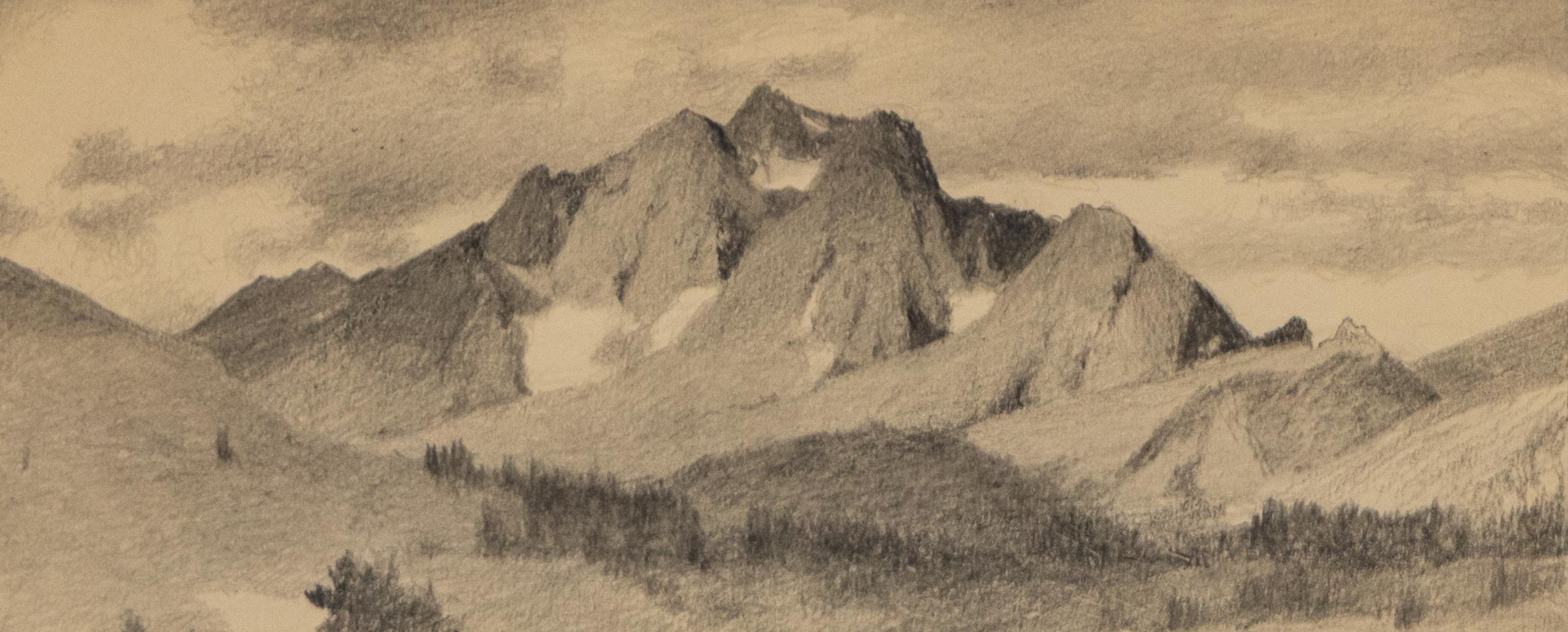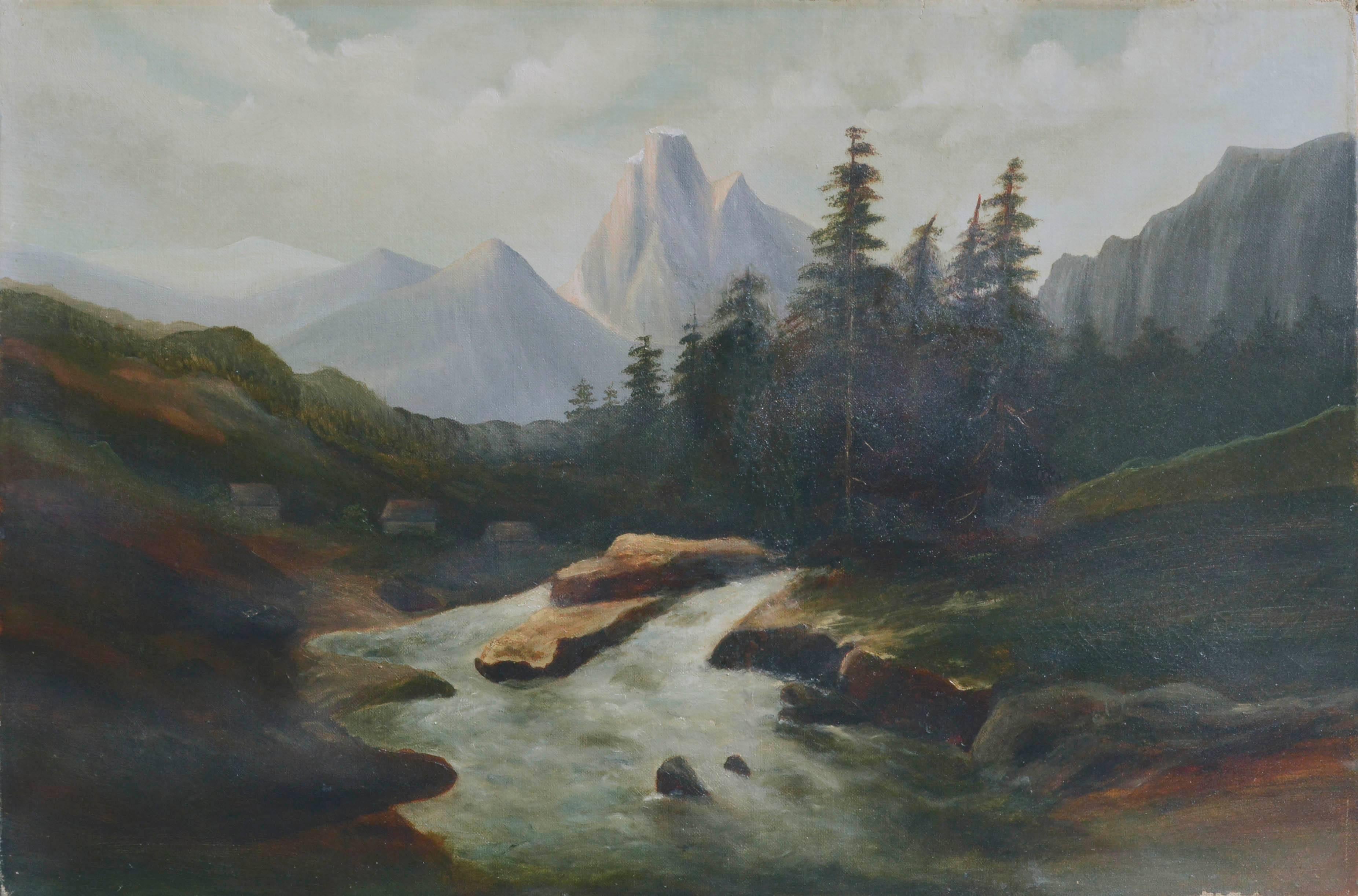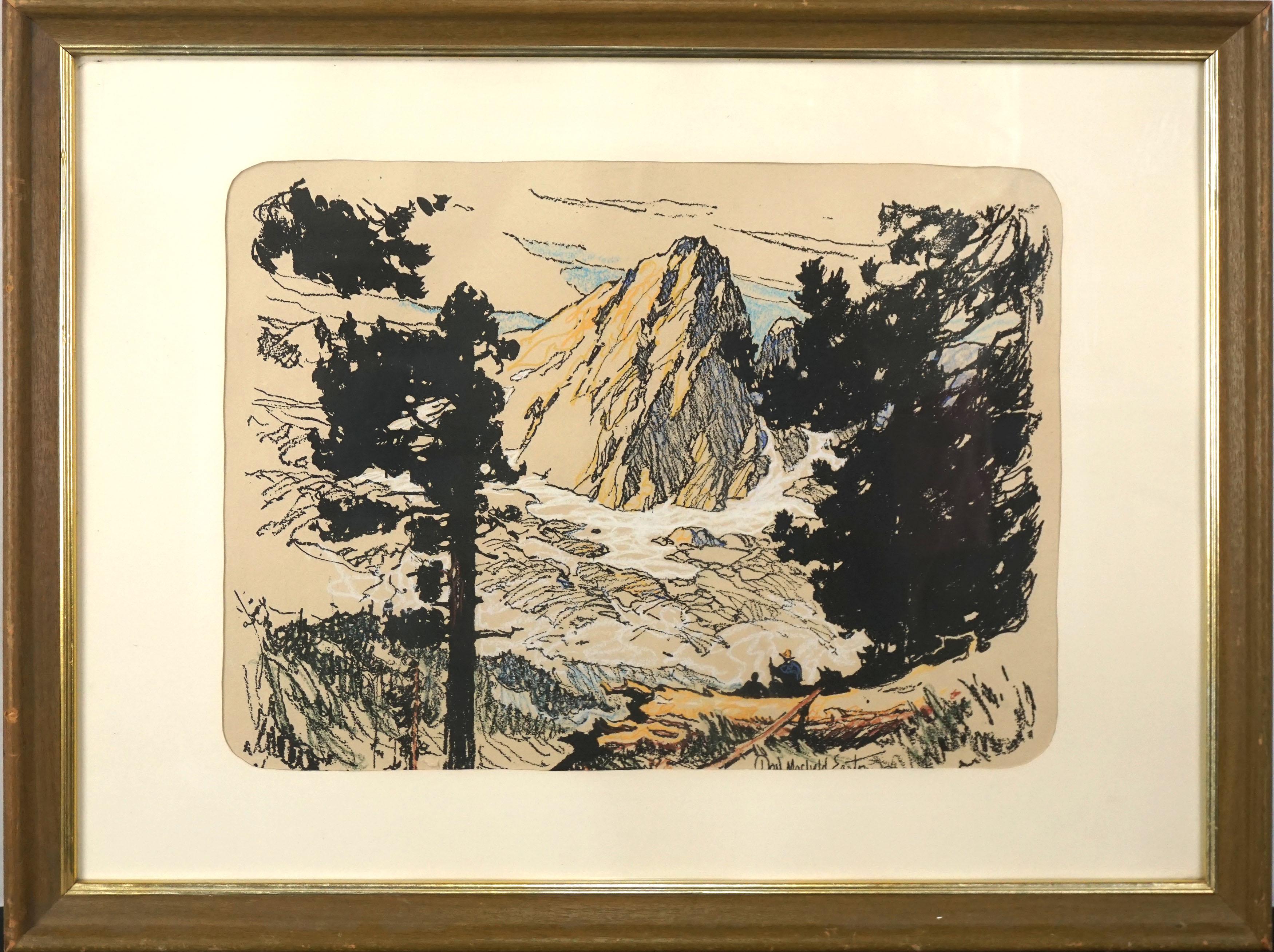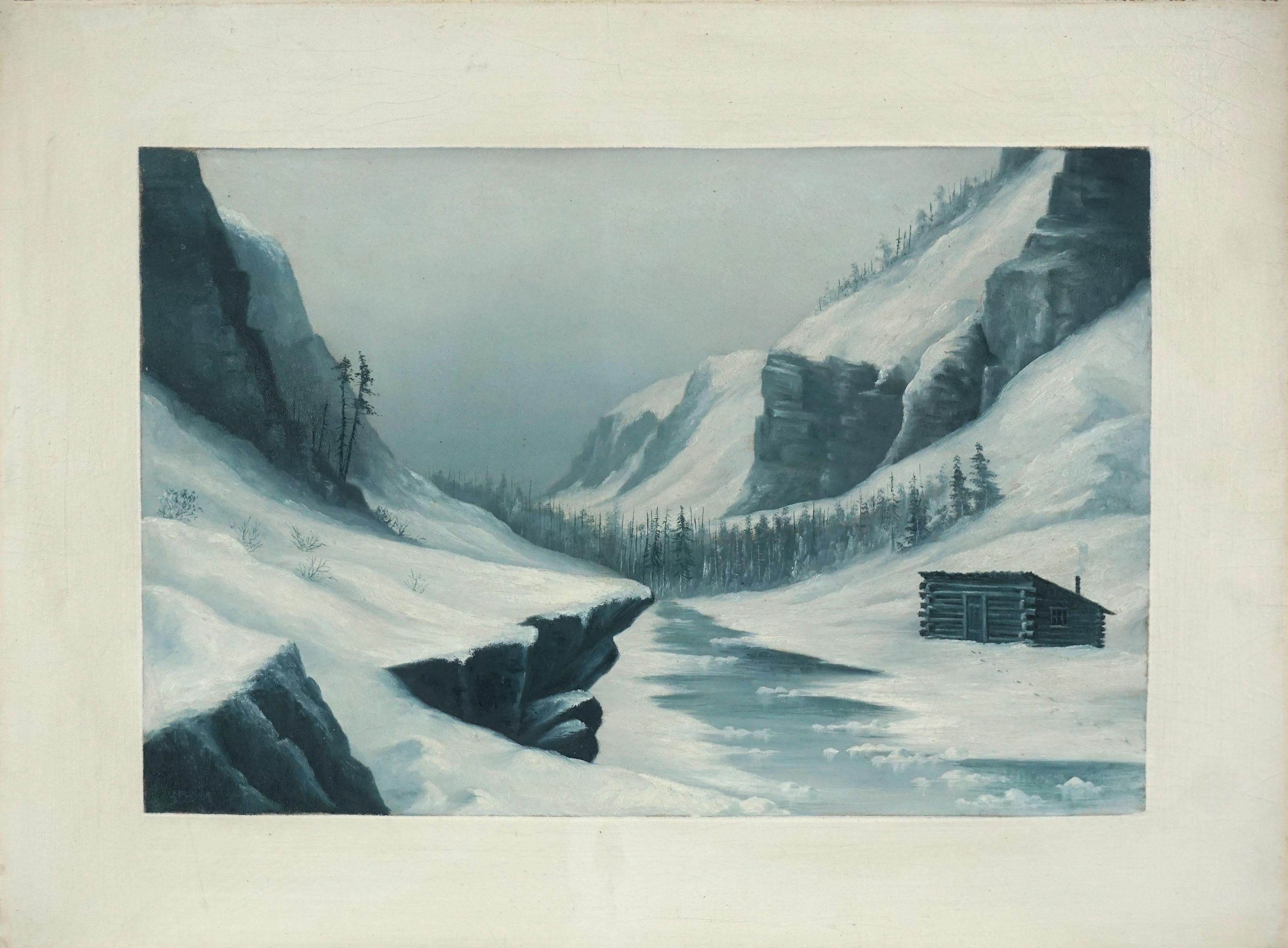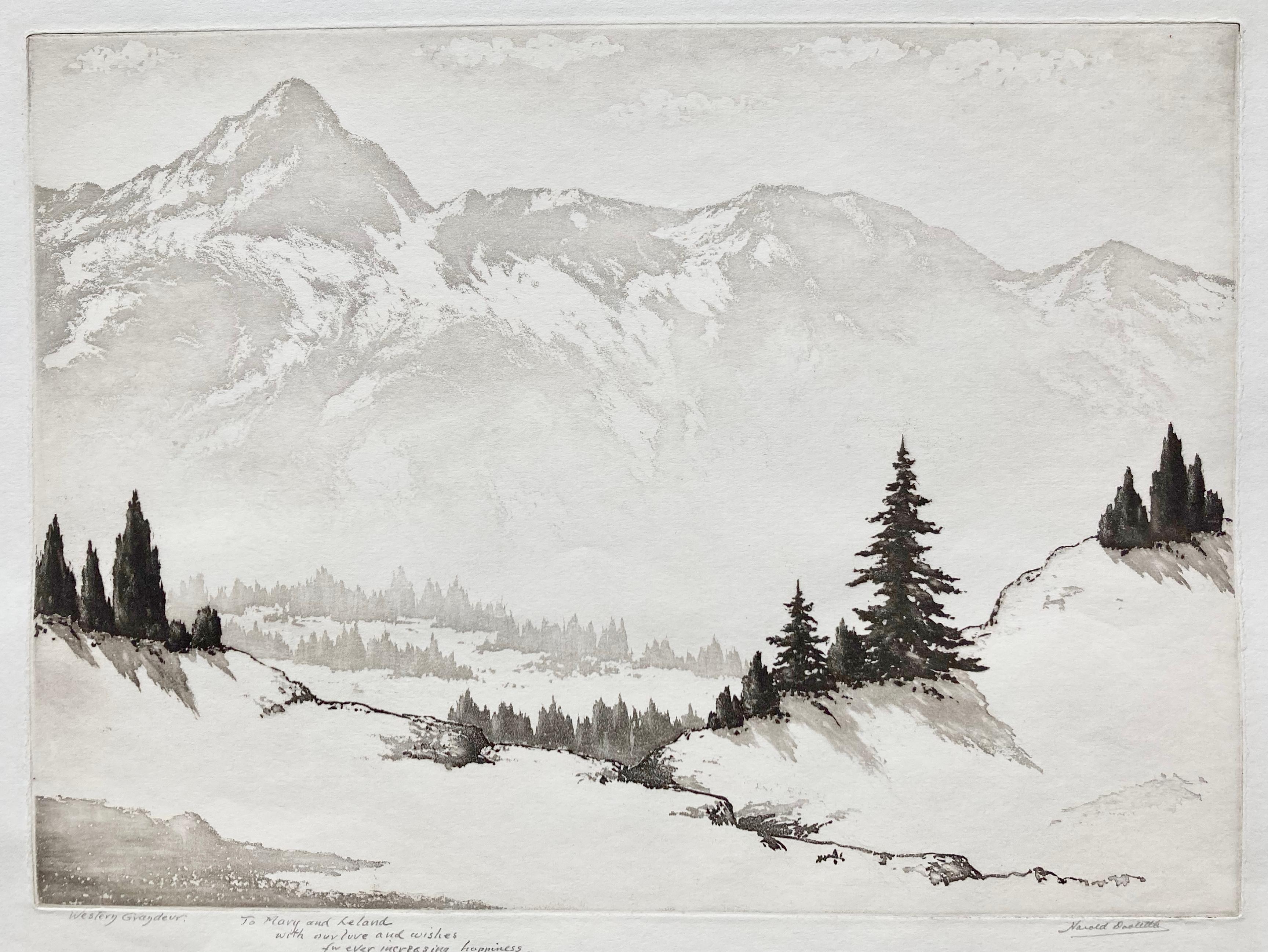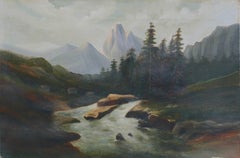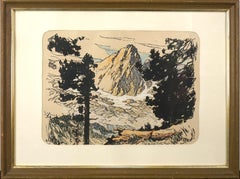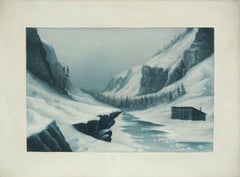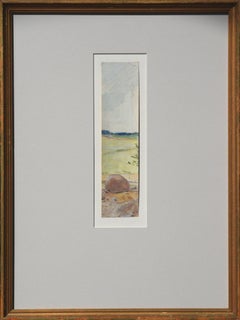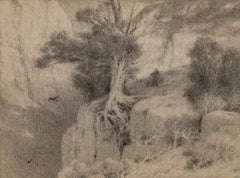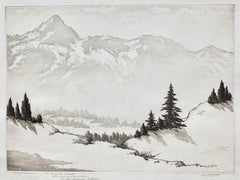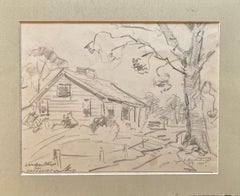Items Similar to Early 20th Century Plein Air Study for Homesteader Colorado Mountain Painting
Want more images or videos?
Request additional images or videos from the seller
1 of 11
Frank Tenney JohnsonEarly 20th Century Plein Air Study for Homesteader Colorado Mountain Painting1909
1909
$1,275
$1,70025% Off
£967.44
£1,289.9225% Off
€1,106.18
€1,474.9125% Off
CA$1,780.83
CA$2,374.4425% Off
A$1,980.04
A$2,640.0525% Off
CHF 1,033.87
CHF 1,378.4925% Off
MX$24,101.91
MX$32,135.8825% Off
NOK 13,191.70
NOK 17,588.9325% Off
SEK 12,359.99
SEK 16,479.9925% Off
DKK 8,255.64
DKK 11,007.5225% Off
Shipping
Retrieving quote...The 1stDibs Promise:
Authenticity Guarantee,
Money-Back Guarantee,
24-Hour Cancellation
About the Item
Robert Azensky Fine Art is pleased to offer original 1909 sketch study of oil painting "Homesteader Colorado Mountain" painting by Frank Tenney Johnson.
It's always special to see the evolution of a painting through the plein air sketches ("studies") by the artist prior to its painting. Frank Tenney Johnson traveled throughout the Colorado Rockies sketching and painting western landscapes and native American and cowboy figurative art.
Medium: Charcoal on paper
Signature: Lower left corner
Date: "1909" below signature
Condition: Tonal aging and minor edge wear consistent with age and use. See images.
Presented in black painted wood frame
Mat size: 14"H x 11"W
Paper size: 9"H x 6"W
Image size (visible with mat): 8"H x 5.25"W
Frank Tenney Johnson was born in Coucil Bluffs, Iowa, in 1874 not far from the Overland Trail. During his childhood, he saw the steady stream of people heading west in all forms of horse-drawn conveyance. This early exposure to the American West was critical in leading Johnson towards the Western landscape as an inspiration for his work. The resulting body of work is a moody and romantic depiction of a long-gone America, rendered in a style that has become practically a genre all its own.
At the age of ten, Johnson moved from Iowa to Milwaukee, WI. There, he took an apprenticeship with F.W. Heinie, a prominent panoramic painter. After a year with Heinie, Johnson apprenticed for Richard Lorenz, a painter and former Texas Ranger who specialized in depictions of horses and western scenes. It was probably during his time with Lorenz that Johnson decided to focus on western subjects himself. He also started illustrating for regional papers and publications, in order to save money for further training.
Further training, as with many of the artists who populated New Mexico in the early twentieth century, took place at the Art Students League in New York, where Robert Henri, William Merritt Chase, John Twachtman, Kenneth Hayes Miller and F. Louis Mora were in the process of teaching perhaps the last great batch of pre-modernists. Though highly stimulated by the training, Johnson was only able to stay for five months, after which he returned to Milwaukee to work and save money in an effort to return to New York. He was able to do so after a time and, upon returning, established an important professional relationship with Emerson Hough, the editor of "Field & Stream" magazine.
At Hough's urging (and on Hough's dime), Johnson traveled to Hayden, Colorado, where he tagged along with a group of cowpunchers in order to sketch their way of life. Though primarily an artist, Johnson also wrote accounts of his time in Colorado for "Field & Stream." After Colorado came Cheyenne, Wyoming, where Johnson attended a "Frontier Days" celebration; after Wyoming, Johnson traveled to New Mexico, where he observed the Navajos and their threatened way of life. This trip changed Johnson from an academic artist with an appreciation for the west to a truly western artist.
Of particular interest to him, in stark contrast to other western artists of the time like Frederic Remington and C.M. Russell, were the more quotidian scenes of the West. Specifically, Johnson focused upon scenes featuring horses, especially at night. Johnson painted a great number of pieces that featured horses tied up outside of saloons, inns or trading posts for the night, the moonlit night punctuated by the warm glow from the lamps inside. In this, he can be considered a pioneer, as his night pieces still serve as the archetype for such work in western art.
Johnson became quite successful through his work for "Field & Stream." He was chosen to illustrate books by the prominent writer Zane Grey, and his gallery shows sold briskly. In fact, one particular show, at the Grand Central Art Galleries at the Biltmore Hotel in New York, sold out opening night. In fact, one man had bought out the entire show: Amon Carter. Having achieved financial security and comfort, Johnson followed his good friend Clyde Forsythe to Alhambra, CA, where the two established residency and shared a studio.
California treated Johnson well. He and Forsythe founded the gallery at the Los Angeles Biltmore, and their studio became a gathering place for famous contemporaries like Charlie Russell, Ed Borein and Norman Rockwell. Johnson opened his own Los Angeles studio, to augment his studios in Cody, Wyoming and New York City. He sold pieces to the National Gallery in Washington and, in 1937, became an Academician of the National Academy of Design. He and Borein also started a trail riding group in Santa Barbara called Rancho Visitadores, which still meets to this day.
At the very zenith of his career, a terrible event befell Frank Tenney Johnson. After kissing his hostess at a party in December of 1938, Johnson either contracted or passed spinal meningitis; he was dead the next day, and his hostess succumbed to the disease two weeks later. For an individual who had always preferred warm, peaceful scenes and who had created such time-consuming, painstaking pieces (because of his chosen technique of creating chalk-white bases on his pieces mixed with a small amount of vermilion and then left to dry, a single canvas could take more than a year to complete) it was an abrupt and inglorious end to a fantastic career.
- Creator:Frank Tenney Johnson (1874 - 1939)
- Creation Year:1909
- Dimensions:Height: 15 in (38.1 cm)Width: 12 in (30.48 cm)Depth: 0.5 in (1.27 cm)
- Medium:
- Movement & Style:
- Period:
- Condition:New acid-free mat. New black painted wood frame. Condition is consistent with age and wear (see images).
- Gallery Location:Soquel, CA
- Reference Number:Seller: GP228*1stDibs: LU54215023622
About the Seller
5.0
Platinum Seller
Premium sellers with a 4.7+ rating and 24-hour response times
Established in 1986
1stDibs seller since 2014
2,960 sales on 1stDibs
Typical response time: <1 hour
- ShippingRetrieving quote...Shipping from: Soquel, CA
- Return Policy
Authenticity Guarantee
In the unlikely event there’s an issue with an item’s authenticity, contact us within 1 year for a full refund. DetailsMoney-Back Guarantee
If your item is not as described, is damaged in transit, or does not arrive, contact us within 7 days for a full refund. Details24-Hour Cancellation
You have a 24-hour grace period in which to reconsider your purchase, with no questions asked.Vetted Professional Sellers
Our world-class sellers must adhere to strict standards for service and quality, maintaining the integrity of our listings.Price-Match Guarantee
If you find that a seller listed the same item for a lower price elsewhere, we’ll match it.Trusted Global Delivery
Our best-in-class carrier network provides specialized shipping options worldwide, including custom delivery.More From This Seller
View AllLate 19th Century Tonalist Rocky Mountain High Camp Landscape
Located in Soquel, CA
Late 19th Century Tonalist Rocky Mountain High Camp Landscape
Wonderful 19th Century tonalist painting of Flat Top Mountain in the Rocky Mountains by unknown artist (American, late ...
Category
Early 1900s Tonalist Landscape Paintings
Materials
Canvas, Oil
Early 20th Century Camping in Sierra Mountains Lithograph
Located in Soquel, CA
Wonderful hand-colored lithograph of Sierra Mountain camping scene by Donald Masefield Easton (American, 1896 - 1956), published in 1931. Signed lower right (partially obscured by mat). Presented in rustic wood frame under glass. Image size: 14"H x 18"W.
Donald Masefield Easton was a painter, illustrator with his subjects being California landmarks and western scenes. Born is Port Costa...
Category
1930s American Impressionist Landscape Prints
Materials
Paper, Oil Crayon, Ink
Early 20th Century Winter Snowy Cabin Oil Painting Signed Landscape
Located in Soquel, CA
Wonderful snowy landscape with footprints leading to cabin in valley circa 1940. Signed lower left "Gruber." Image has painted "mat" effect. Inside image is 12.50"H x 18.38"W. Unfram...
Category
Early 1900s Realist Landscape Paintings
Materials
Oil, Board
1903 Rocky Landscape Of Distant Mountains
By Karl Yens
Located in Soquel, CA
Beautiful 1903 impressionist fragment of a California landscape by Karl Yens (1868-1945, German). Watercolor on paper, created in 1903. Presented in...
Category
Early 1900s American Impressionist Landscape Drawings and Watercolors
Materials
Paper, Watercolor
Early 20th Century Serene Mountaintops Landscape
Located in Soquel, CA
Sweeping early 20th century landscape painting of mountains reflected over a California lake by an unknown artist. Circa 1915. Unframed. Image size: 20"L x 16"H.
Category
1910s American Impressionist Landscape Paintings
Materials
Oil, Fiberboard
Early 20th Century Mt. Shasta Landscape
By Lorenz E. Griffith
Located in Soquel, CA
A beautiful and substantial painting of a distant view of snow capped Mount Shasta "in the style of" Lorenz Griffith (American, 1889-1968). Unsigned. Disp...
Category
Early 1900s American Impressionist Landscape Paintings
Materials
Canvas, Oil, Cardboard
You May Also Like
1910 Colorado Plein Air Landscape Sketch – Mountains, Valley & Field Drawing
By Charles Partridge Adams
Located in Denver, CO
This original circa 1910 graphite landscape drawing is a rare and intimate work by renowned Colorado artist Charles Partridge Adams (1858–1942), celebrated for his mastery of the Ame...
Category
1910s American Impressionist Landscape Drawings and Watercolors
Materials
Graphite
1910 Colorado Canyon Sketch, Plein Air Graphite Landscape Drawing
By Charles Partridge Adams
Located in Denver, CO
This original circa 1910 graphite drawing by renowned Colorado landscape artist Charles Partridge Adams captures a dramatic and intimate view of a solitary tree clinging to the edge ...
Category
1910s American Impressionist Landscape Drawings and Watercolors
Materials
Graphite
WESTERN GRANDEUR
By Harold Lukens Doolittle
Located in Santa Monica, CA
HAROLD LUKENS DOOLTTLE (1883 - 1974)
WESTERN GRANDEUR c. 1945
Aquatint, signed titled and dedicated. Image 9 ¾ x 13 5/8 inches. Large full sheet with deckle edges 15 ½ x 19 inches...
Category
1940s American Realist Landscape Prints
Materials
Aquatint
"Creekside South"
Located in Warren, NJ
This is an Joseph Beckwith Hartranft Original drawing on paper “july 1967”. In good shape Unframed. Measures 16x13
Category
1960s Drawings and Watercolor Paintings
Materials
Paper
Early 20th Century Mountain Lake Landscape Oil Painting by Morisset c.1924
Located in San Francisco, CA
Early 20th Century Mountain Lake Landscape Oil Painting by Morisset c.1924
Beautiful landscape with darkening skies over a mountain lake. The reeds at the lakes shore are illuminate...
Category
Early 20th Century Impressionist Landscape Paintings
Materials
Canvas, Oil
Country Landscape - Late 19th Century Countryside Painting by Lewis George Fry
By Lewis George Fry
Located in Watford, Hertfordshire
Lewis George Fry (1860 - 1933)
Lewis George Fry was a British painter who was born in 1860 in Clifton, Bristol UK.
This piece was created with mixed media and is in a gilt frame un...
Category
Late 19th Century Post-Impressionist Landscape Drawings and Watercolors
Materials
Mixed Media, Watercolor
